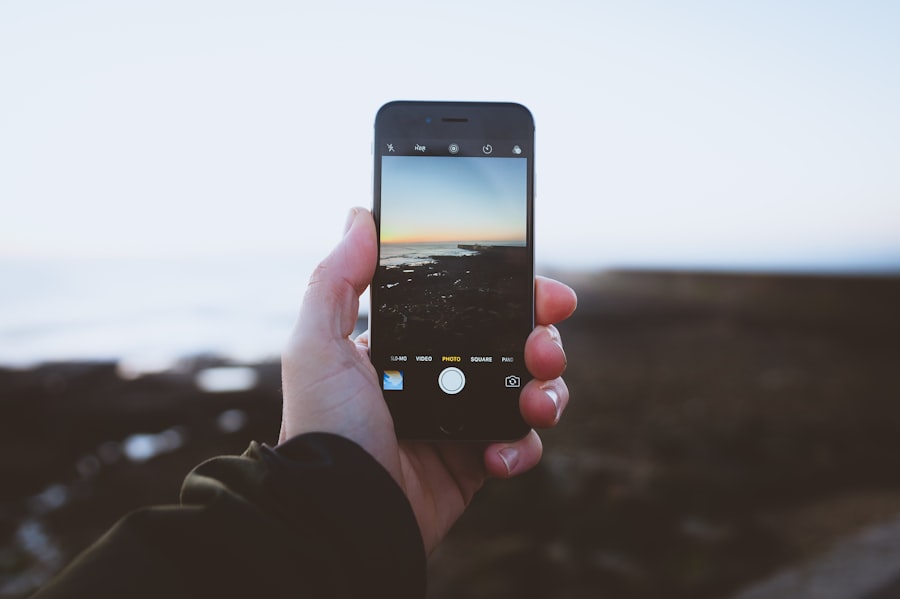Find My iPhone is a powerful feature integrated into Apple’s ecosystem, designed to help users locate their devices in the event of loss or theft. This service utilizes a combination of GPS, Wi-Fi, and cellular data to pinpoint the location of an iPhone, iPad, or other Apple devices. When activated, Find My iPhone not only displays the device’s location on a map but also offers additional functionalities such as playing a sound to help locate it, remotely locking the device, or erasing its data to protect sensitive information.
The service is accessible through the Find My app on other Apple devices or via iCloud.com, making it a versatile tool for users who may misplace their devices. The feature operates seamlessly in the background, continuously updating the device’s location as long as it is connected to the internet. This capability is particularly beneficial for individuals who frequently misplace their devices or for parents who wish to keep track of their children’s whereabouts.
However, while Find My iPhone provides significant advantages in terms of security and convenience, it also raises questions about privacy and control over location data. Users must navigate these complexities to make informed decisions about how and when to use this feature.
Key Takeaways
- Find My iPhone is a feature that allows users to locate their lost or stolen device using GPS and Wi-Fi signals.
- Location tracking is important for quickly finding a lost device and can also help law enforcement recover stolen devices.
- Users can pause location tracking on Find My iPhone by enabling the “Lost Mode” feature, which disables location updates until the mode is turned off.
- It is important to consider pausing location tracking when the device is in a secure location or when privacy concerns arise.
- Potential risks of pausing location tracking include making it more difficult to locate a lost or stolen device and limiting the ability to remotely erase data.
The Importance of Location Tracking
Location tracking has become an integral part of modern technology, offering numerous benefits that extend beyond merely finding lost devices. In an increasingly mobile world, the ability to track the location of devices can enhance personal safety and security. For instance, parents can monitor their children’s locations to ensure they arrive safely at school or other destinations.
Similarly, businesses can utilize location tracking to manage fleet vehicles or ensure employee safety in remote areas. The implications of location tracking are vast, influencing everything from personal relationships to corporate logistics. Moreover, location tracking can facilitate emergency responses.
In situations where individuals may be in distress or unable to communicate their whereabouts, having a device that can be located quickly can be life-saving. Emergency services can use location data to reach individuals in need more efficiently. This capability underscores the importance of location tracking not just as a convenience but as a critical tool for enhancing safety and security in various contexts.
However, with these benefits come ethical considerations regarding privacy and consent, prompting users to weigh the advantages against potential risks.
How to Pause Location on Find My iPhone

Pausing location tracking on Find My iPhone is a straightforward process that allows users to temporarily disable the feature without completely turning it off. To do this, users need to navigate to the Settings app on their iPhone. Once there, they should tap on their name at the top of the screen to access their Apple ID settings.
From this menu, they can select “Find My” and then choose “Share My Location.” Here, users will find an option to toggle off “Share My Location,” effectively pausing the location sharing feature. It is important to note that pausing location sharing does not disable Find My iPhone entirely; users can still locate their device if it is lost or stolen. This distinction is crucial for those who want to maintain some level of security while managing their privacy.
Additionally, users can choose to pause location sharing for specific contacts rather than disabling it entirely. This flexibility allows individuals to tailor their location-sharing preferences according to their comfort levels and specific situations.
When to Consider Pausing Location
| Metrics | Consideration |
|---|---|
| Low foot traffic | Consider pausing location if foot traffic is consistently low |
| Low conversion rate | Consider pausing location if the conversion rate is below the desired threshold |
| High cost per acquisition | Consider pausing location if the cost per acquisition is higher than the target |
| Seasonal factors | Consider pausing location during off-peak seasons or when there are external factors affecting foot traffic |
There are several scenarios in which pausing location sharing on Find My iPhone may be advisable. One common situation is when individuals are in sensitive environments where privacy is paramount, such as during medical appointments or confidential meetings. In these instances, users may prefer not to share their real-time location with others, even if they typically do so.
Pausing location sharing can provide peace of mind in such contexts, allowing individuals to maintain control over their whereabouts. Another scenario involves personal relationships where trust may be an issue. For example, if someone feels uncomfortable with constant monitoring by a partner or family member, they might choose to pause location sharing temporarily.
This action can serve as a means of establishing boundaries and fostering open communication about privacy needs. Ultimately, the decision to pause location sharing should be based on individual circumstances and comfort levels regarding privacy and security.
Potential Risks of Pausing Location
While pausing location sharing on Find My iPhone can enhance privacy, it also comes with potential risks that users should consider. One significant risk is the inability for trusted contacts to locate an individual in case of an emergency. For instance, if someone is in a dangerous situation or has had an accident, being unreachable due to paused location sharing could delay assistance from friends or family members who might otherwise check on them.
This aspect highlights the delicate balance between privacy and safety that users must navigate. Additionally, pausing location sharing may lead to misunderstandings in personal relationships. If one party believes they are being monitored for safety reasons while the other chooses to pause sharing for privacy concerns, it could create tension or mistrust.
Clear communication about the reasons for pausing location sharing is essential in these situations to prevent unnecessary conflict. Users should weigh these risks against their need for privacy and make informed decisions accordingly.
Alternatives to Pausing Location

For those who wish to maintain some level of privacy without completely pausing location sharing on Find My iPhone, there are several alternatives available. One option is adjusting the frequency of location updates. Users can choose to share their location only at specific times or under certain conditions rather than continuously broadcasting their whereabouts.
This approach allows individuals to retain control over when and how their location is shared while still benefiting from the security features of Find My iPhone. Another alternative involves utilizing temporary location-sharing features available in various messaging apps. For example, apps like WhatsApp and Google Maps offer options for users to share their real-time location for a limited duration with selected contacts.
This method provides a way to communicate one’s whereabouts without committing to ongoing tracking through Find My iPhone. By leveraging these alternatives, users can strike a balance between privacy and safety according to their unique needs.
Managing Location Settings on Find My iPhone
Managing location settings on Find My iPhone is crucial for optimizing both security and privacy. Users should regularly review their settings to ensure they align with their current preferences and circumstances. To access these settings, users can go into the Settings app and navigate to Privacy > Location Services.
Here, they can see which apps have access to their location data and adjust permissions accordingly. For instance, some apps may not require continuous access to location data and can be set to “While Using” instead of “Always.” Additionally, users should familiarize themselves with the “Significant Locations” feature within the Location Services settings. This feature tracks places that are significant to the user based on frequency of visits and can be useful for personalized services but may also raise privacy concerns.
Users have the option to clear this history or disable the feature altogether if they prefer not to have this data collected. Regularly managing these settings ensures that users maintain control over their location data while benefiting from the functionalities offered by Find My iPhone.
Tips for Ensuring Privacy and Security
To enhance privacy and security while using Find My iPhone, users should adopt several best practices. First and foremost, enabling two-factor authentication for their Apple ID adds an extra layer of security against unauthorized access. This feature requires a verification code sent to a trusted device whenever there is an attempt to log into the Apple ID from an unrecognized device or browser.
Another important tip is regularly updating the device’s software. Apple frequently releases updates that include security patches and enhancements that protect user data from vulnerabilities. Keeping devices up-to-date ensures that users benefit from the latest security measures available.
Furthermore, users should be mindful of whom they share their location with through Find My Friends or similar features within the Find My app. Limiting access only to trusted individuals helps mitigate risks associated with unwanted tracking or breaches of privacy. Lastly, educating oneself about potential phishing scams targeting Apple ID credentials can further safeguard against unauthorized access and ensure that personal information remains secure.
By implementing these strategies, users can enjoy the benefits of Find My iPhone while maintaining control over their privacy and security in an increasingly interconnected world.
If you are concerned about the privacy implications of pausing your location on Find My iPhone, you may want to read the privacy policy on getiphoneinfo.com. Understanding how your location data is used and protected can help you make informed decisions about managing your privacy settings.
FAQs
What is Find My iPhone?
Find My iPhone is a feature developed by Apple that allows users to locate their lost or stolen iPhone, iPad, Mac, or Apple Watch using another Apple device.
Can you pause location on Find My iPhone?
No, you cannot pause the location tracking feature on Find My iPhone. Once the feature is enabled, it continuously tracks the location of the device.
How can I stop sharing my location on Find My iPhone?
To stop sharing your location on Find My iPhone, you can turn off the “Share My Location” feature in the settings of your device.
Is it possible to temporarily disable location tracking on Find My iPhone?
No, there is no option to temporarily disable location tracking on Find My iPhone. The feature is designed to continuously track the location of the device for security and safety purposes.
Can I track the location of my lost or stolen iPhone using Find My iPhone?
Yes, if Find My iPhone is enabled on your device, you can track its location using another Apple device or through the iCloud website.










